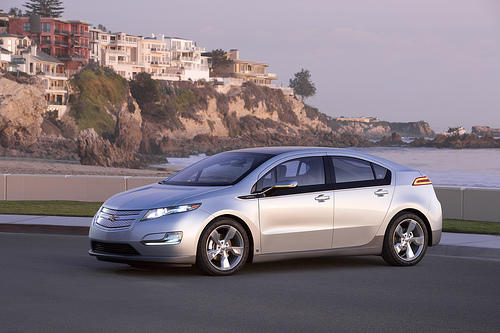The National Highway Traffic Safety Administration recently reported on the status of a “safety defect investigation into the potential risk of fire in Chevy Volts.” According to the Associated Press, General Motors will request about 8,000 Volt owners return their vehicles to dealers in order to make “structural modifications” which will strengthen the area around batteries. These repairs are intended to lessen the risk of fire following serious crashes.
However, the AP explains this call back is not considered a full blown recall. To qualify as a recall, the safety move would need to be issued by both the car company and the NHTSA. Thus far, only GM has carried out this call back.
Critics, who have already expressed disapproval towards tax credits given to buyers of this electric vehicle, may feel this pseudo recall reflects an effort by the government agency to protect the rebounding car company. Some may argue further that this government response is the result of its new financial interest in the once-struggling auto company. In 2009, the U.S. government bailed out the floundering auto manufacturer with $62 billion in taxpayer aid. According to the Wall Street Journal, this aid and reorganization package made the U.S. government the majority owner of the car company, which had previously not turned a profit since 2004.
The announcement of this latest recall by Chevy may further hurt the company’s reemergence as an automotive industry powerhouse. Again, this could account for why the government agency has kept this most recent stumbling block for GM as only a “safety defect investigation.” Critics of the government’s past actions to become majority shareholder of GM may call this move nothing more than a thinly-veiled protection of their interests.
Nevertheless, the NHTSA explains that “under the observation of representatives of General Motors and in close consultation and collaboration with experts from the Department of Energy, and the Department of Defense” both coolant leakage and “battery intrusion” must occur for the outbreak of fire in the Volt following a crash. According to the AP, the three documented fires occurred seven days to three weeks after the crash and were blamed on a “coolant leak that caused an electrical short.”
All of these vehicles that caught fire were involved in tests carried out by federal safety regulators. The AP reports that both the NHTSA and GM maintain that Volts are safe and that no fires have taken place following crashes on “real-world roadways.” The NHTSA also explains that a Volt retrofitted with a “newly-designed steel reinforcement device” showed “no intrusion into the vehicle’s battery compartment” and no apparent coolant leakage following a recent test crash.
Despite these modifications, GM has explained that to avoid the outbreak of fire after a crash, the Volt’s batteries should be drained. According to the AP, the company said it never relayed this information to the NHTSA. The news source further explains that two GM executives admitted the company “had no formal procedure to drain the batteries until after the June fire.”
The AP reports that GM “now sends out a team to drain the batteries after being notified of a crash by GM’s OnStar safety system.” Even with these procedural changes and promising new crash test results, the NHTSA explains it “has monitored the crashed vehicle since the test and will continue to do so for one more week.”
Despite heavy cooperation between the automaker and government safety inspectors over this call back, it is possible this vehicle concern will continue to hurt sales. Last year, the Volt saw a disappointing total of only 7,671 vehicles sold, which was behind both its goal of 10,000 and its closest competitor, Nissan. Furthermore, consumers may begin to doubt the legitimacy of the U.S. government’s safety reassurances when they have an interest in the success of this car company.


